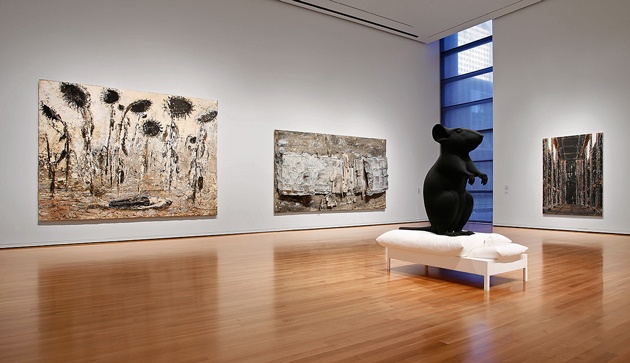
On November 15, with COVID-19 cases surging again in this state and around the country, Governor Inslee took away the summertime punchbowl and announced a new set of restrictions on risky activities. In some ways, these restrictions are less onerous than those imposed in the first surge, in March, even though new daily case numbers are higher now. Businesses deemed nonessential then, including close-up personal services such as salons, barbershops and tattoo parlors, may now operate at 25 percent capacity. Restaurants, which could only serve takeout then, can still seat diners outdoors, an option that hardy Seattle chow hounds have found surprisingly congenial even in November. (It’s easier, if not safer, to rough it in heated patio pods and sidewalk igloos that are more indoors than out.)
But for some potentially super-spreading venues, the autumn rules are just as rigid as springtime’s. High-volume, close-contact activities like bowling, moviegoing, choral singing, sports matches, indoor fitness classes, and museum-going must cease entirely.
Wait a minute… museums? Or, to put the question another way, which item does not belong in this list? These temples of silent awe and rapt contemplation are qualitatively different from the other closed venues. They produce none of the panting, shouting, or other high-volume exhalation and mixing of breath that go with singing, sports, and working out; museumgoers would get shooshed or ejected long before reaching such levels. And, away from trophy works like the Mona Lisa, they naturally distance rather than packing in together as movie, concert and sports crowds do.
Museums and art galleries are great places to get away from other people. Larger ones already have watchful guards and docents who can remind us to stay masked and distant (and don’t touch the artwork).
Of course some restrictions would be needed to keep them open, starting with the usual 25 percent capacity, six-foot distance, and masking requirements. Perhaps some minimum air-volume, ceiling-height, and ventilation standards should also be established. The gates could be opened only to solo visitors, couples, and household groups. And high-energy, hands-on operations like science centers and children’s museums might have to stay closed. But the fact that some institutions can’t operate safely in a pandemic shouldn’t doom those that can.
For museums offering physically passive but imaginatively supercharged encounters with art, the restrictions would actually enhance the experience. No more noisy tour groups blocking the view and breaking the spell!
That experience is, or would be, especially valuable now, when so many other avenues of aesthetic delight and imaginative expansion are closed to us. We may not be able to travel to Rome, Kyoto, the Arctic or New York, but we could still escape into the wonders they have produced–if the museums were open.
For the museums themselves, the closures are somewhere between a disaster and an existential threat. The Seattle Art Museum’s executive director told the Seattle Times in April, during the first shutdown, that it was hemorrhaging $500,000 a month and forgoing the $600k it would have made at its summer gala. MoPOP, which already struggled, recently told The Stranger it expected revenue to fall as much as 75 percent this year. A third of 760 museum directors nationwide surveyed in summer feared their institutions would not survive the year. A few had already closed permanently. Memberships (along with donations and grants) have kept many afloat, but may wither if members have nothing to go see.
Not just the institutions and their patrons suffer under closures. Shops and sales galleries are important income sources for the museums that host them and the artists and craftspeople who supply them. SAM’s gallery has been especially successful and supportive, in part because it’s a rental as well as sales gallery. Rentals give artists steady checks and serve as a gateway drug for recruiting patrons; people who can’t afford or don’t feel ready to buy art outright can dip their toes in the collecting pool.
As retail outlets, SAM’s shop and gallery have been able to stay open while the more spacious exhibition spaces upstairs must close—vivid evidence of the absurdity of the closure rules. But the closure upstairs has dented traffic and sales downstairs. The museum hasn’t helped the situation with its garbled messaging. Its COVID-19 Update page reports wrongly that the shop is closed and doesn’t mention the gallery at all. During the August-to-November interregnum, when the museum reopened, non-members had to buy a ticket ($24.95 for adults) to get into the shop and gallery. The reported reason: to enable contact tracing should any infections appear. But if the museum was obliged to take names (by selling tickets) for contract tracing, why weren’t stores and restaurants as well?
The effects of museum closures radiate out into their neighborhoods as well. That’s especially true for SAM, the cultural equivalent of a shopping mall’s anchor tenant, surrounded by shuttered restaurants and ghostly streets in a downtown that’s gone in a few dreary months from supercharged work and play space to what one ex-downtowner calls “a dystopic wasteland.” Such impacts would be necessary sacrifices—if they were necessary to curb the current coronavirus’s transmission. But if they’re not….
The current COVID-19 restrictions are only in place until December 14, but they will almost certainly be extended or amplified in the wake of Thanksgiving’s reckless mixing. That’s none too soon to reconsider whether we really need to shutter the museums to shut out the virus.
Discover more from Post Alley
Subscribe to get the latest posts sent to your email.

Mr. Scigliano nails it. Yet again.